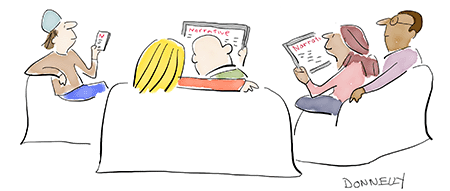Back in California, I’d read the published letters of Dr. Samuel Mudd to his wife. Dr. Mudd (misleadingly unheroic name!) was the physician who set the broken leg of John Wilkes Booth after the murder of Lincoln and suffered, in consequence, what many believe was a tragic miscarriage of justice. He was sentenced to life imprisonment in Fort Jefferson, that incredible Federal sea-fortress on the Dry Tortugas, the outwardmost of the Florida keys. Dreyfus himself could not have told a more tragic and bitter story than Dr. Mudd, nor was Dreyfus’ prison in French Guiana ever more terrible than Fort Jefferson. Of all the points of historic interest I had yet to see in America, this seemed most worthy of a journey.
And so, launched upon my new quest, I left California, reached Florida, and headed for Fort Jefferson, sixty miles out in the Gulf from Key West.
But after Fort Jefferson—? Because of the pressure of time I’d had no opportunity to re-examine the map of the world and chart my year ahead. Where was I going next—now that I could go anywhere?
A flood of answers met these questions:
Cuba, certainly. Through a pleasant friendship with Admiral Richmond Pearson Hobson, I had developed a great desire to know more about the Spanish-American War. Hobson had made me eager to visit Santiago, at the east end of the island, where he had sunk the Merrimac, and where the Spanish warships, in the famous naval battle that followed, were driven in flames upon the shore.
And I was resolved to travel to Haiti and climb the Bonnet à l’Évêque, the mountain soaring three thousand feet above Cap Haitien, from the summit of which the ruins of King Christophe’s Citadel, one of the wonders of the world, still command the Black Republic.
I knew the astonishing story of the rediscovery of Columbus’ bones only a generation ago, in a church in the city of Santo Domingo. At this same church the bones are still to be seen, incased in the original leaden casket. Santo Domingo was another place I must explore.
A biography of Hannibal and the chapters on the Punic Wars in Livy’s History of Rome had given me the idea of retracing Hannibal’s elephant-march across the Alps, aboard an elephant of my own, the next time I got to Europe—just as a sporting adventure.
And Russia! I was particularly interested in the tragic end of the Romanoffs. On the map I had found Ekaterinburg, the city in Siberia where the Czar and his family were massacred, and I had made it one of my travel goals.
And Abyssinia! Now was my chance to reach this marvelous and romantic land.
Several times, in years past, I had just missed getting to Mount Athos, that fantastic community in northern Greece where no woman, or any female animal or fowl, has been allowed for centuries. I would include Athos on my tour.
I wanted to return to Palestine and explore the hilltop, overhanging the Dead Sea, where one finds the site of the palace in which Salome danced for the head of John the Baptist.
Arabia Deserta and the explorations of Sir Richard Burton had rekindled my lifelong desire to visit Mecca.
Undisturbed for six months, I had had little else to do but read books about the foreign world . . . hungry, each time I closed one, to see for myself the countries and the people that lived in its pages.
And now suddenly had come the command to go and see them all, to possess myself of a pair of seven league boots and stride across the map, from nation to nation, from continent to continent, straightway to these beckoning goals, to these islands of desire.
At dawn, one of the fishermen roused me, and suggested that I look to the west. There, three miles away, across the pale gray water, I saw, through the early morning haze, the sinister, scowling walls of Fort Jefferson rising, like a sea-monster with a hundred eyes, right out of the waves.
Where did I choose to go now? I sat in the park in Santo Domingo before the Cathedral, feeling almost embarrassed by my surfeit of freedom. Other islands in the West Indies attracted me, Martinique, Tobago, Trinidad. They were all beautiful and historic, but I was already familiar with them. I wanted new scenes, new quests for mountain tops unvisited. Why go to the old ones when there was so much of the world I’d not yet explored?
I reached for my pocket atlas and opened it to the map of Europe, to find some inspiration. And I found not one inspiration but two . . . my eye fell upon the Alps dividing Switzerland from Italy, over which my special hero, Hannibal, had led his elephant-borne army of Carthaginians. I’d always wanted to follow in his tracks and ride over the Alps on an elephant of my own. “I think,” I said to myself, “I’ll do it now. Hannibal crossed in October. Today is September twentieth. If I hop along I can make the crossing not only by the same route as Hannibal but at the same season. And then when I’ve reached Turin on my elephant, or Rome, or wherever else I decide to halt, I’m going to make a long jump to Ekaterinburg in western Siberia. There, perhaps, I can learn first-hand the story of the massacre of Czar Nicholas and his family. After that I think I’ll go to Abyssinia—and maybe Mecca. But first I’d better get to Paris and see about that elephant.”
There was a boat sailing in six hours for France. I took passage aboard her.



